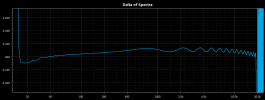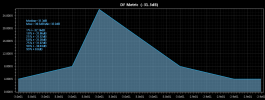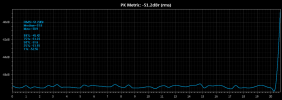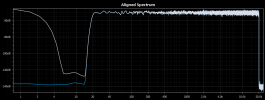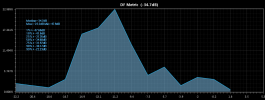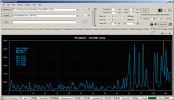Here are the results of testing #9038 and M0pro with the multitone signal:
DFwf = -34.12 dB |
DFmg = -52.27 dB |
DFph = -45.10 dB |
DFwf = -75.68 dB |
DFmg = -75.57 dB |
DFph = -63.91 dB |
... and with the classical piece from the GearSpace forum:
DFwf = -36.21 dB |
DFmg = -55.70 dB |
DFph = -30.29 dB |
DFwf = -80.33 dB |
DFmg = -83.89 dB |
DFph = -48.86 dB |
You can listen the null signal from the both devices amplified to the same LUFS (the middle part of the classical piece above):
null-#9038.zip
null-M0pro.zip
The degradation of the low freqs in #9038 is due to the phase inaccuracy, not the magnitude one (Mg diffrograms do not show this). As the low freqs are not in phase with the reference signal they are exaggerated in the null signal. DC filter could be a reason.
The time inconsistency of #9038 is visible in both Mg and Ph diffrograms. It is audible as a “codec-like” degradation. It's hard to say what is the reason - the clock instability and/or instability of the power supply of the circuits.

